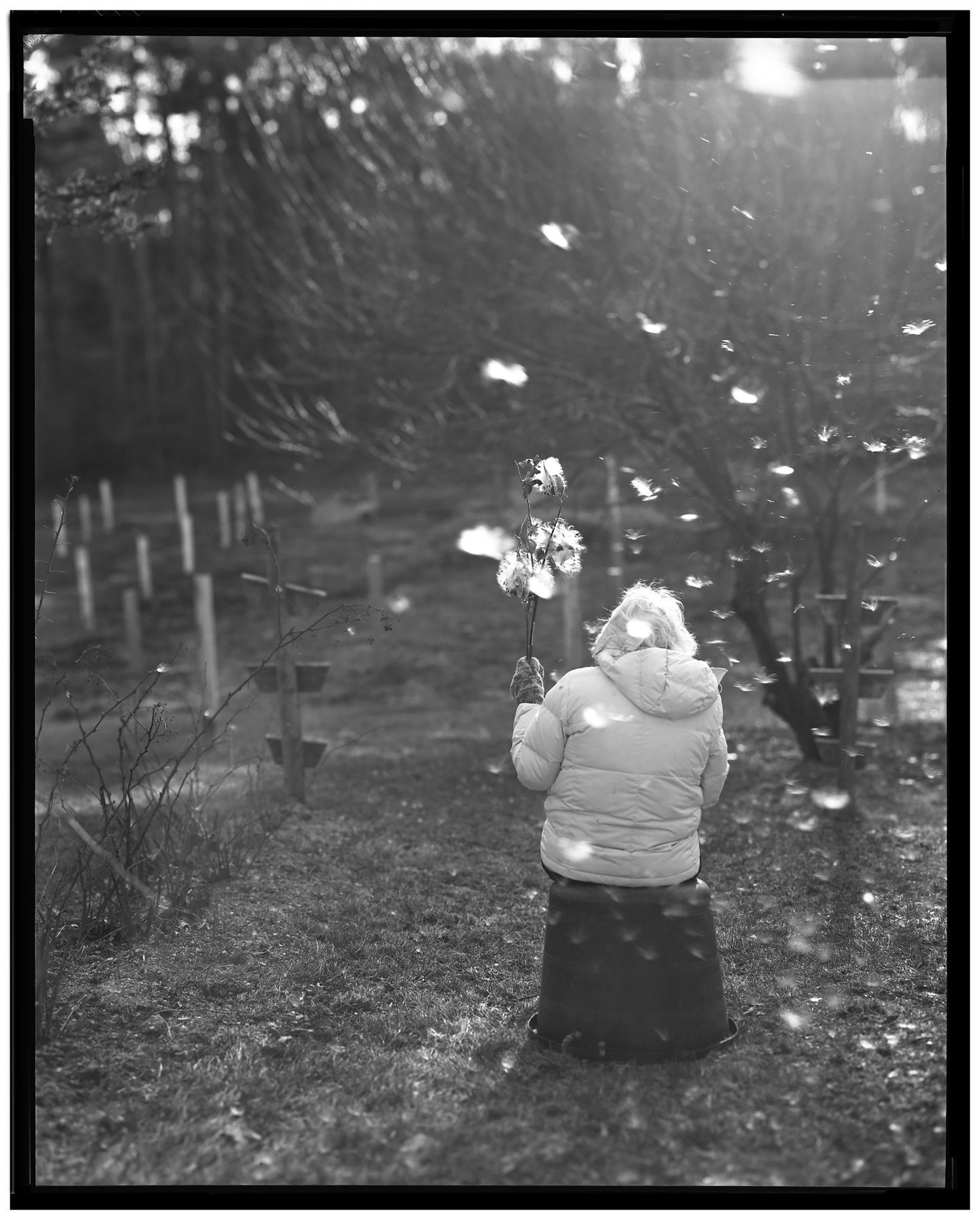
When photographer Cheryle St.Onge first began caring for her mother who was living with dementia, it seemed “unconscionable” that she would document her experiences.
The two shared a close bond. St. Onge is an only child, and her father, a physics professor, died at the age of only 39. St. Onge’s mother, Carole, never remarried and for decades she lived in an apartment adjoining the home St. Onge shared with her husband and three children.
Like St. Onge, Carole was an artist, first a painter, but then in mid-life she began carving small sculptures of birds from wood.
Watching Carole’s decline following her dementia diagnosis was a “dark” period for St. Onge, but on the encouragement of friends she decided to try taking some pictures – and the process became a type of collaboration between mother and daughter.

An artistic collaboration
“Often when I am trying to make pictures of people, or I have even felt this with animals too, there is some cajoling that might be necessary as there is this sense that they just want the hell to end,” St. Onge told The Washington Post.
But her mother “never expressed any reservations”.
She no longer recognised herself in images, so the photos for her were simply about the process of making the picture, not the image itself – or her appearance.
The collaboration was a “coming together to do something – anything,” St. Onge said.
“Most often the things we did together that were most meaningful were heading outside in the sun, in the snow, into the water, out into a field and looking and walking, and eventually stopping to make a picture.
Once the photo was taken, Carole would often sleep, but St. Onge would stay up looking over the “gorgeous, beautiful pictures of someone I loved and who I knew was fading”.
“They were incredible because she had given me her all when we were making them.”
St. Onge would send a few to friends and family, and sometimes to curators and editors.
“The sharing of something I loved making and was intrinsically pleased with brought me some happiness at what was sometimes such a dark part of my day,” she said.
“The pictures were a lovely distraction from the sadness.
“I knew she had shone her light for me, and here I was sharing her light with others.”
It was a sensation St. Onge found “excruciating”, but it was also revelatory. The images brought comfort to many who were on a similar trajectory.
“I would go to parties, and people would come up to talk to me,” St. Onge told The New Yorker.
As well as sharing their own stories, people wanted to hear her’s.
“It’s a beautiful back and forth, much like a true portrait,” said St. Onge.

‘I continue to be devastated’
Carole died over a year ago, and St. Onge still misses her deeply.
“I continue to be devastated by her absence but the profound loss is because of our love of one another,” she told HelloCare.
“I have come to so better understand just how much of a collaboration this work was … Just how much she suggested, aided and just every damn day was enthusiastically willing to spend time with me and to make pictures together.”
St. Onge intends to honour both her parents’ spirit by “moving on in life” and thriving. But it’s not easy.
“I am not thriving, but I am growing bit by bit spiritually and emotionally,” she said.
A loving family tribute
Carole’s grandchildren, St. Onge’s children, wrote a tribute to their grandmother on Instagram that captures her spirit.
“She set an example for what it meant to live as an enthusiast. Birding, baking, painting and carving birds, Grammie never did anything halfway.
“She travelled to Alaska to birdwatch (and learned how to shoot a gun if she needed to protect herself from bears), she spent decades perfecting the perfect crusty-on-the-outside but soft-on-the-inside loaf of bread (which we happily ate, toasted with butter) and relentlessly created stunning oil paintings of the natural landscape. Grammie was always outdoors.
“She had the most beautiful clear skin and bright blue eyes. In the winter her cheeks would turn rosy as soon as she stepped onto her porch.”

The Bob and Diane Fund’s annual grant
St. Onge has been awarded The Bob and Diane Fund’s annual grant for her photographs, titled ‘Bringing the Birds Home’. The images are a mix of digital and film and were created using a variety of cameras: iPhone, DSLR and an 8×10 view camera.
The Bob and Diane Fund’s annual grant awards $5,000 to a photographer who is documenting stories about Alzheimer’s and dementia.
The Bob and Diane Fund’s work is “so important,” says St. Onge, because the organisation “truly understands the terrain of this subject matter”.
Gina Martin, Founder and Executive Director, The Bob and Diane Fund, said ‘Calling the Birds Home’ is a “beautiful tribute” to Carole.
“The mother and daughter collaboration is a poetic and touching portrayal of one living with dementia.”

These photographs are so beautiful. I looked at them through tears, as my mother had Alzheimer’s and I felt that I was losing her as she was losing her own self.